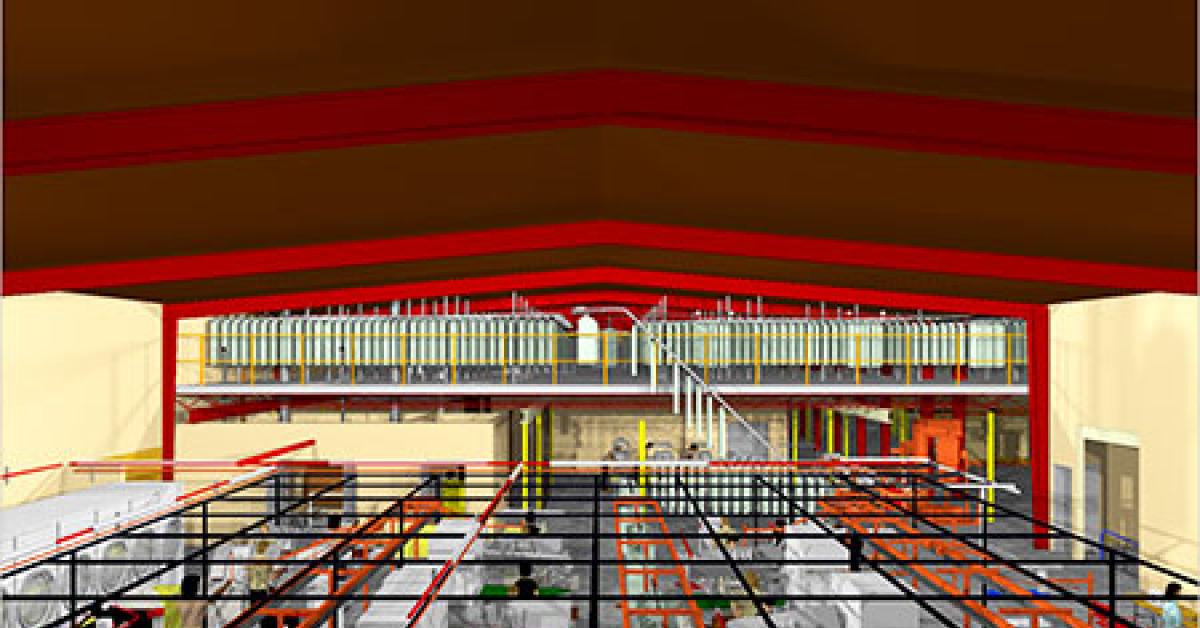LARKSPUR, Calif. — Bigger and newer always means better, right? Not necessarily. Building or renovating a drycleaning plant is a big decision. It requires a significant investment of time, effort and capital. Unfortunately, too many dry cleaners charge ahead in the design process without taking the time to think through what they really need and what they can afford.
When you make a mistake in a plant renovation or new build, you pay for that mistake every day thereafter with inefficient space or, worse, increased (and unnecessary) costs. So, it’s imperative to do it right the first time. You can improve your chance of success if you avoid these simple mistakes.
MISTAKE #4: FORGETTING THE THREE MOST IMPORTANT WORDS—LOCATION, LOCATION, LOCATION
There’s a great building available at an even greater price. Should you jump on it? Before you sign on the dotted line, think it through. Price isn’t always the best criteria. A new plant (3,000 to 4,000 square feet) may be better located in an industrial park — not always, but usually. Any new facility should be centrally located within your market area, and it’s important that the new location be near your labor pool and, if possible, public transportation.
MISTAKE #5: NOT DOING THE MATH
While you are dreaming of shiny new equipment and spacious new digs, don’t forget what could be the most important factor in determining whether the time is right for a renovation or construction of a new plant — the potential return on your investment (ROI).
ROI is simply the ratio of your costs to the benefits—future cost savings and/or profits—of a project. Put simply, you can measure ROI by asking yourself:
What are the variable costs involved in your current production and what will the variable costs be at the new facility? This includes labor, supplies, utilities and miscellaneous expenses such as maintenance, waste removal, claims, etc.
What are your current fixed costs and how will the new facility affect/reduce them? Fixed costs are items such as rent, insurance, distribution (travel to and from the plant for trucks/routes), and any other costs that might be improved with a new location/facility.
What is the cost (not price) of the new plant? Estimate the cost of the facility and equipment.
Compare your total current costs against the cost benefits of a new facility and determine the potential cost savings.
Divide your cost savings by the cost of the new facility to determine your ROI.
An ideal ROI ranges from 20% to 40% or more.
WHAT CAN ROI REALLY MEAN?
Here’s an example:
Joe Dry Cleaner is planning a new-build project for a 5,000- to 6,000-square-foot building/plant. The total investment price* for the project is $1 million:
New building, $500,000 ($100,000 down payment)
Infrastructure/design/permits/etc., $100,000
Equipment, $400,000
The monthly costs* for the project are as follows:
Mortgage ($400,000 at 8% for 20 years), $3,345/month
Taxes (2% of value per year), $833/month
Building liability insurance, $1,000/month
Infrastructure and equipment ($500,000 at 8% for 7 years), $7,793/month
Total monthly costs: $12,971
(* Focus on cost, not price. Price is the value placed on the total investment, while cost is what you actually spend over time. So, the question is, can you cover the cost?)
If Joe’s monthly costs are now $12,971, the new facility will have to save just about $13,000 a month (above Joe’s current costs) to break even. If you are paying, say, $3,000 in rent for your existing space, then the new plant will have to save you the difference of $10,000.
As an example, the savings can be split in half—increased sales and decreased costs. Therefore, one must save $5,000 in monthly costs and increase sales so one can drop another $5,000 to the bottom line. Of course, the more that is done in one category, the less one has to do in the other.
If each employee is equal to, say, $2,000 per month, a savings of 2.5 employees just about gets you there. It’s amazing what material handling costs a company. With the proper layout, many times employees become redundant, and can be replaced and/or retained as business grows, as the need to add more employees diminishes. Other potential savings are in utilities, claims, etc. due to increased efficiencies.
Dropping $5,000 to the bottom line would require an additional $8,333 in sales (gross profit of 60% after deducting 40% for variable costs would drop $5,000 to the bottom), or, in other words, approximately $100,000 per year. If you are grossing $1 million and can increase business 10% over the next few years, you will have accomplished your goal.
Your return on investment occurs when you exceed those goals of decreasing costs and increasing sales described in the example, both of which are attainable.
ROI is measured on the amount of cash you invested in this project, not the overall “price” of $1 million. Let’s say you invested $100,000 for the property in the form of a down payment and another $50,000 on other up-front expenses. You now have a cash investment of $150,000. A 20% to 40% ROI is considered an excellent return. So, to accomplish that, you would need to see a cash return over and above your current levels of approximately $30,000 to $60,000. This will be accomplished by your cost savings on the increased business in addition to the additional sales of, say, $50,000 to $100,000. Again, a great goal for growth!
As the economy improves and businesses look to the future, the idea of expanding your drycleaning plant, or just renovating the space you already have, can be highly attractive. Before you invest the time, money and effort needed to successfully launch a major improvement project, talk to a professional plant designer to determine what is right for your business.
Have a question or comment? E-mail our editor Dave Davis at [email protected].

